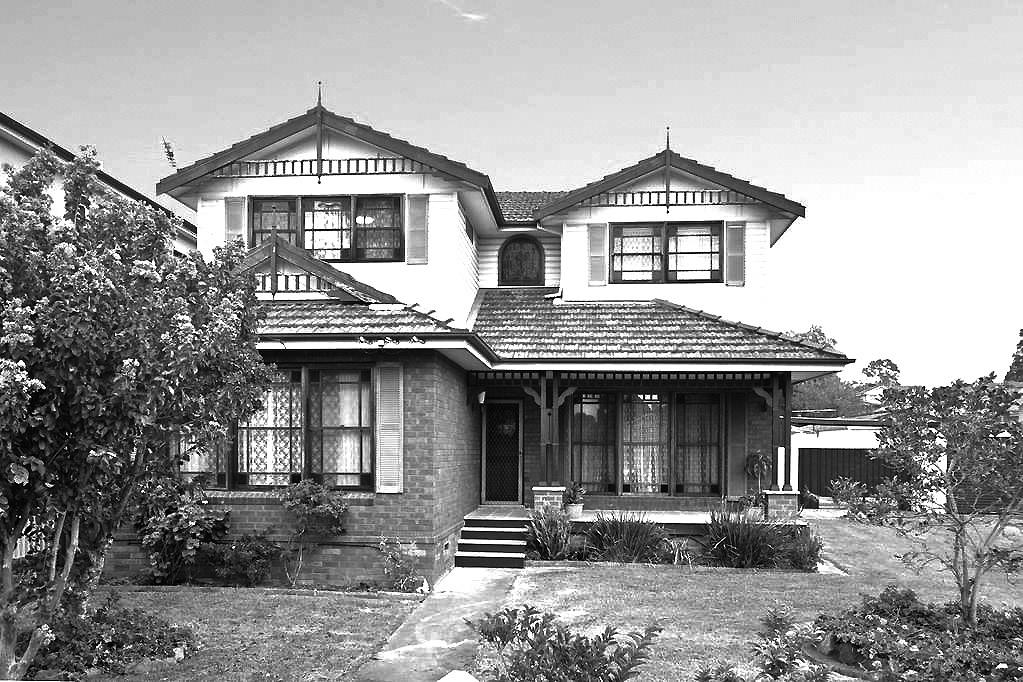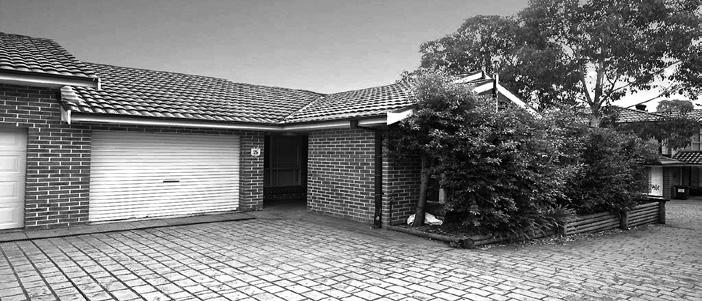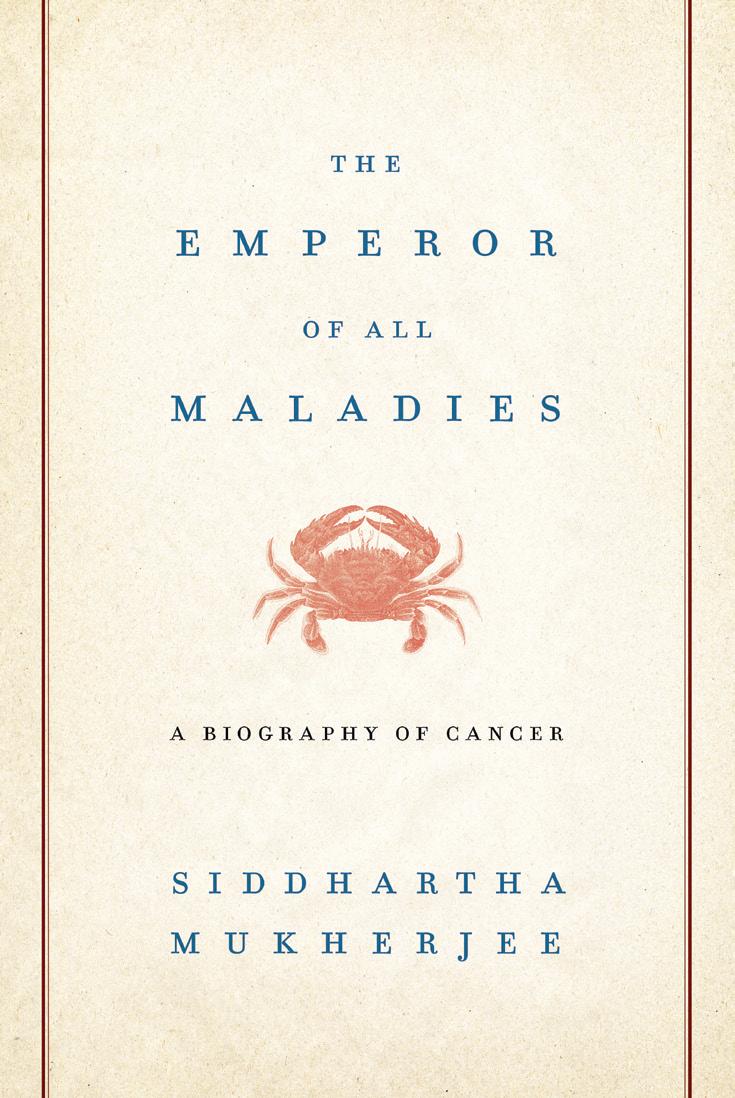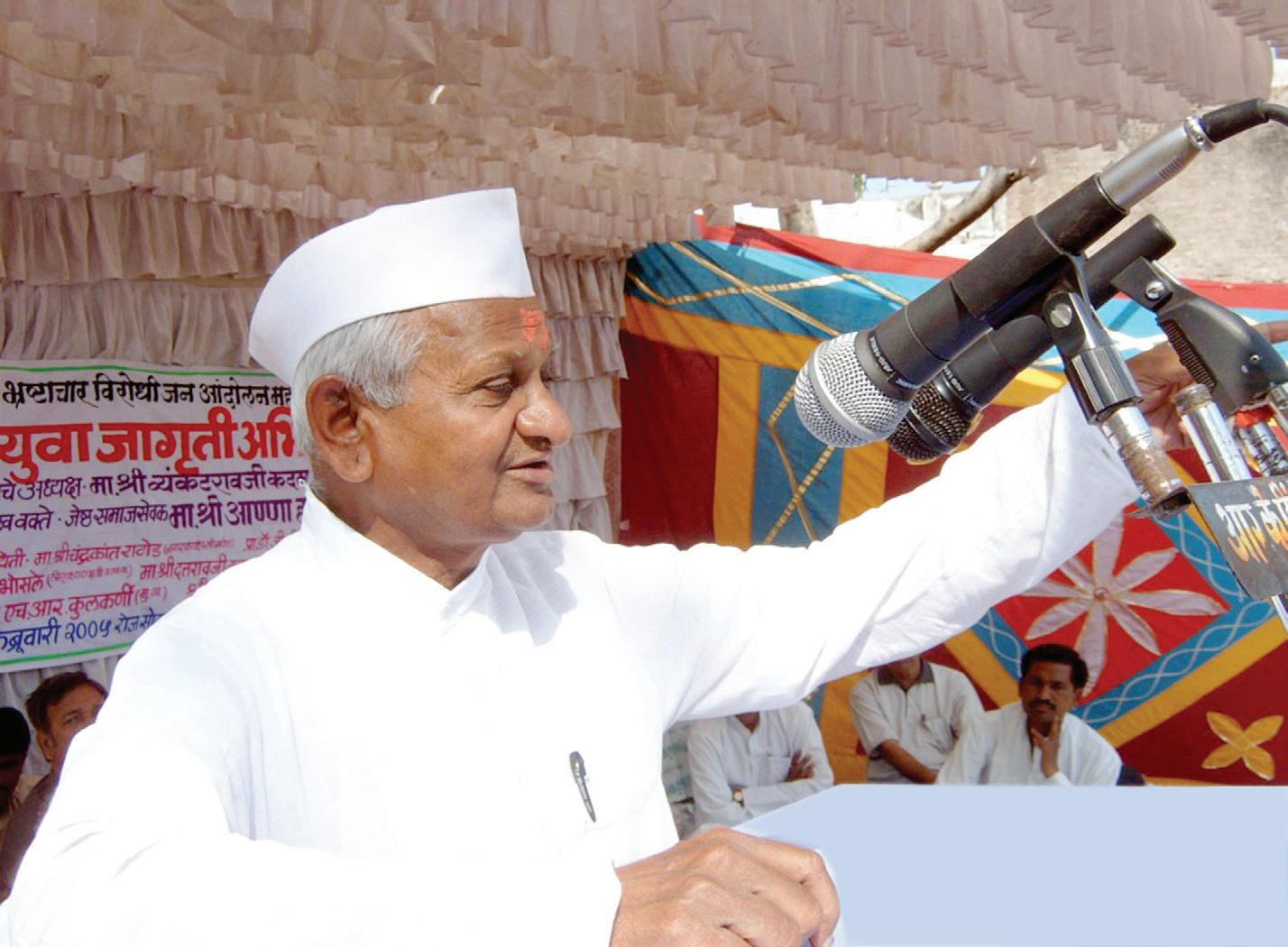
11 minute read
PeopleParties
from 2011-04 Sydney (2)
by Indian Link















Indian American Siddhartha
Mukherjee bags Pulitzer
Indian American cancer specvialist Siddhartha Mukherjee has bagged this year’s Pulitzer prize in the general non-fiction category for his book The Emperor of All Maladies: A Biography of Cancer


Delhi-born Mukherjee’s book has been described as “an elegant inquiry, at once clinical and personal, into the long history of an insidious disease that, despite treatment breakthroughs, still bedevils medical science”.
The finalists in the category were The Shallows: What the Internet Is Doing to Our Brain by Nicholas Carr and Empire of the Summer Moon: Quanah Parker and the Rise and Fall of the Comanches, the Most Powerful Indian Tribe in American History by S.C. Gwynne.
An assistant professor of medicine at Columbia University and a staff cancer physician at Columbia University Medical Center, Mukherjee had said in an interview in December last year: “Cancer is growing dramatically in certain parts of South Asia.”
Mukherjee advocated a strong anti-smoking campaign and breast cancer screening to battle the growing incidence of the disease in India.
Less than a month after its publication, Mukherjee’s book, published by Scribner, featured among “The 10 Best Books of 2010” tobacco smoking as “clearly one culprit among young men and women”.
“But there are other culprits too,” he said. “As the population ages and other diseases are slowly eliminated, cancer begins to come about.”
“Cancer rises in the double negative only when all the other killers have been killed. So I think that’s beginning to occur in some parts of South Asia.”
Mukherjee, 40, who grew up in New Delhi’s Safdarjung Enclave, “immersed in reading and books” at home and studied at St. Columba’s School, says he “came into oncology in a sort of reverse, in the sense that I first trained as a cellular biologist when I was in Oxford as a Rhodes scholar”.
“So I really came from the cell into medicine. Many people first train in medicine, then eventually get fascinated by cells.”
The book isn’t meant for the medical profession alone, he said. “The target is everyone. The point of this book was to make this world of medicine and science and culture accessible to anyone who is interested,” Mukherjee said.
“This is a disease that has developed in our times in a very poignant way. So I intend this book to be read by anyone who wishes to find out about it: patients and people whose loved ones are affected by cancer or any person interested in its history.”
Foreign operators queuing up for Bollywood tours
Guess who is making a beeline for Bollywood tours? Foreign tour operators, especially those from Europe and Australia, says a company that organises trips to film sets and to the residences of popular movie stars.
Bollywood Tourism, the company, says it is getting an amazing response from foreign tour operators at the Great Indian Travel Bazar (GITB) which was held recently in Jaipur.
“The response we got has been amazing. Apart from the NRI market, we also witnessed a huge amount of interest from countries like Europe and Australia,” said Poonam Arora, head marketing and operations, Bollywood Tourism.
The ratio of Indian and foreign tour operators coming to the stall was 30:70, she said.
With each tour, the company offers visits to film sets where shooting is in progress. While the cost of a full day trip is $150, a half day journey costs $125. India, after all, has one of the largest filmmaking industries in the world, churning out over 1,000 movies every year.
“Film and television stars are a common sight at these sets. However, we do not guarantee meeting them,” said Arora.
Talking about the interest in Bollywood among foreign nationals, she said the industry had become an international brand, giving tourism a new dimension.
Bollywood movies are highly popular in foreign markets. Also, with English subtitles, more and more foreigners are getting curious about the making of these films, she added.
The company has partnered industry leaders such as Balaji Telefilms, Big ND studios, Whistling Woods and Anupam Kher’s Actor Prepares academy.
The tour also offers customised products, which include sari draping sessions, portfolio creation and makeover sessions, which are very popular among the foreigners.
An initiative of the Federation of Indian Chambers of Commerce and Industry (FICCI), GITB aims at establishing a global platform to stimulate and promote inbound tourism to India.
The bazaar had a sombre start after the Rajasthan government declared a state of mourning following the death of the Maharaja of Jaipur, Sawai Bhawani Singh.
The objective of the three-day long event was to reinforce India as a world class tourism destination and provide opportunity to interact with foreign buyers, policy makers, investors and focus on inbound tourism.
The mart had around 220 Indian exhibitors and 200 foreign tour operators from across 50 countries.
Next five year plan to aim at double-digit growth: Ashwani Kumar
India’s 12th Five Year Plan (2012-13 to 201718) will focus on infrastructure and aim at double-digit growth with the approach paper set to get a final shape in six months, Minister of State for Planning Ashwani Kumar has said.
“Infrastructure deficit in our country is costing us two percentage points in terms of our gross domestic product (GDP),” Kumar said in an inteview ahead of the meeting of the full Planning Commission, presided over by Prime Minister Manmohan Singh.
“We would like to achieve double-digit growth over the next five year plan. That’s our aim. That is our vision. Even our prime minister has said a growth rate of 10 percent is well within India’s reach. I hope and pray we will succeed,” the minister added.
India registered 8-percent growth in 2009-10 and is expected to have registered a 8.6-percent economic expansion during the previous year ended March 31, as per the estimates of the Central Statistical Organisation.
According to Ashwani Kumar, the meeting will discuss the finer points of the Five Year Plan and the prime minister, who is also the chairman of the Planning Commission, was expected to give a broad vision on the programmes to be pursued during the period.
The prime minister has estimated that the country will need as much as $1 trillion worth of investment in infrastructure during the next plan and has called for major rehaul of the policies and procedures to be able to attract such quantum of funds.
“Yes, on infrastructure, but for telecommunications, we were not able to achieve some of the targets set for the current plan period. That is why there we are giving that much emphasis to this crucial area,” the minister said.
“We would need private-public partnership on a large scale to ensure substantial private sector investment in infrastructure,” said Ashwani Kumar, who is also also the minister of state for parliamentary affairs and science and technology.
He said all policies were being finalised in consultation with stakeholders, including the non-government organisations and the civil sopciety, to ensure transparent and democratic process.
Ashwani Kumar also told IANS that the Planning Commission was aware of the finance ministry’s opposition to a proposal to hire 20 experts from outside as there were already 60 such advisors.
“We are aware of their views. No final decision has been taken. We will duly consider the matter before taking a decision.”
The minister also spoke about the existing subsidy regime and the need to curtail such spending so that more funds are available for development. “But subsidies are also an important tool for state intervention to mitigate the burden on poor,” he said.
“Yet we also need to be realistic. Subsidies should be within the parameters of fiscal prudence.”
Ashwani Kumar also said with India having the world’s largest young population, the government was focusing on skills development to ensure better employability of its youth, to be able to reap the demographic dividend.
“In addition, we will focus on monitoring the progress of our flagship programmes to address any deficiencies in implementation.”
Indians need be more prepared for natural calamities: Experts
Within a month after a magnitude 9.0 earthquake struck Japan, India experienced two moderate tremors. Were these warnings for something bigger? If experts are to be believed, they were and say Indians need to be more prepared to deal with natural calamities.
“Some of these could also be seen as a precursor for something bigger, considering India’s vulnerability to earthquakes because of its location in a high risk seismic zone,” said N.V.C. Menon, former member of the National Disaster Management Authority (NDMA).
According to him, it is important to launch an awareness campaign to prepare Indian households to prepare them in responding to natural calamities such as the one that wreaked destruction in Japan.
“We could face massive destruction if a high intensity earthquake strikes India,” Menon said, stressing there is the “need for a massive awareness campaign as people here are not clear about the steps needed to reduce the impact of an earthquake.”
The government, under the aegis of NDMA, is working to enhance India’s preparedness to face an event like that in Japan.
However, people should also prepare themselves to deal with an emergency, Menon said.
Households in quake-prone areas should prepare emergency kits with candles, medicines, match boxes, important documents and other necessary items so that they can evacuate immediately in the event of an earthquake.
Studies have shown that more than 60 percent of India is vulnerable to earthquakes and most of the deaths during a quake are caused by the collapse of buildings.
According to geographical data, Kashmir, Punjab, the western and central Himalayas, the northeastern region and the Rann of Kutch fall under the Zone 5 category, referred to as the Very High Damage Risk Zone.
“Northeastern states like Assam and Meghalaya and cities like Shimla and Delhi are sitting on the brink of a disaster,” said V.K. Sharma, professor of disaster management at the Indian Institute of Public Administration.
“With about 685 slums and congested localities in the old city with maximum number of unsafe buildings, Delhi could collapse in the event of a high intensity earthquake,” warned Sharma.
More than 50 percent of Shimla could also collapse, he added.
The biggest problem, according to Sharma, lies in the non-adherence of the prescribed building codes by private builders while erecting any new structure.

The National Building Codes of India contains stipulations for fire safety requirements, materials to be used, structural design and construction, including safety and building and plumbing services.
In cities maintained by municipal corporations it is expected that all building codes are followed for new constructions.
“But very often the builders and contractors violate the codes,” Menon said. This was the reason for the collapse of the buildings in Ahmedabad and Bhuj in Gujarat during the 2002 earthquake even though they were almost 480 km away from the epicentre of earthquake, he asserted.
The condition is least encouraging in rural areas and in those urban areas where private constructors are hired for building purposes.
“In these cases, people employ local constructors who have no engineering background and are not aware of any code,” said the expert.
Menon advised a few things that can be done by households to increase the earthquake resistance of existing buildings.
“For existing buildings, rapid visual screening by trained civil engineers can help find its quake resistance capacity,” he said. The study of the soil type and the possibility of sand liquifaction that can happen during quake vibrations should also done, the expert suggested.
India’s export surges 37.5 percent to $246 bn in 2010-11
India’s exports surged 37.5 percent to $245.9 billion in 2010-11, substantially surpassing the official target of $200 billion, on the back of nearly 85 percent jump in engineering exports, Commerce and Industry Minister Anand Sharma revealed recently.
“It is indeed heartening to see that our exports for the year ending March 31, 2011 touched $245.9 billion,” Sharma told reporters in New Delhi.
The government had set a target of $200 billion of export for 2010-11, which was
Export of petroleum products rose 50.58 percent to $42.45 billion.
The gems and jewellery sector, which is a considerable employer, saw an export of $33.54 billion, a growth of 15.34 percent over the previous year.
“India today is looked upon as one of the leading players in the global arena. The growth path will continue in coming year as well,” said Rajiv Jain, chairman of the Gems and Jewellery Export Promotion Council.
The performance of this industry is critical as it contributes 16.67 percent of India’s total merchandise exports. The growth in the sector was primarily driven by cut and polished diamonds which registered an increase of 54.91 percent in 2010-11.
Drugs and pharmaceuticals sectors, for which India has gained considerable global reputation, saw exports worth $10.32 billion, strikes are no more the potent weapons they were when Mahatma Gandhi unleashed them against the Raj. garments exports rose 4.23 percent to $11.1 billion.
Although a simple man like the Mahatma, Hazare is not at home in English, which in today’s India can well be a disadvantage considering the profile of youthful and urban India.
But he had other attributes: austere life and a history of struggles - and victories.
He also had the backing of people who too enjoy the reputation of honesty, including Magsaysay award winners Kiran Bedi and Arvind Kejriwal.
Hazare had another weapon, one that was not of his making: it was the widespread anger among Indians in the wake of the scandalous revelations of corruption blamed on Suresh Kalmadi, A. Raja and more.
So Hazare proved to be the spark that ignited a wildfire in India.
Within days, people in state after state and in town after town, cutting across their religious and other barriers, realized that they finally had a man who was articulating their anger, their innermost frustration, and their hopes.
The 24-hour television channels only contributed to the cause. They did not create the mass resentment.
The volcano exploded. Jantar Mantar, an 18th century observatory, became Cairo’s Tahrir Square, drawing tens of thousands of young and old, educated and not so educated, retired and the still working, politically conscious and politically apathetic, housewives and Bollywood.
It was dominantly middle class though.
Suddenly, people strained to hear every word of a man they had never met before. By Day 4, the protest site had become so thick with people that there was no place to stand without being jostled.
15 percent higher than the previous fiscal’s figure.
“Exports have indeed exceeded our expectations. This is the first time exports have crossed $200 billion mark. In fact, beating our target, it crossed $200 billion mark in February itself,” the minister said.
India’s total imports in 2010-11 were $350.3 billion, resulting in a trade deficit of $104.4 billion.
In March, exports jumped 43.9 percent to $29.1 billion.
On growth prospects in the coming years, Sharma said exports were targeted to nearly double to $450 billion by 2014.
“Based on the performance of exports, we are confident we will achieve the target of exports of $450 billion which we have set for ourselves in the draft strategy paper,” he said.
Exports of engineering goods recorded the sharpest growth in 2010-11. Engineering exports surged 84.76 percent to $60 billion.
However, exports of iron ore fell 25 percent to $4.5 billion in the reporting fiscal.
Anna Hazare has become symbol for a better India
It needed a 73-year-old man with no pretensions, a school dropout at that, to wake up India.And in just five days, Anna Hazare proved that it wasn’t enough to have an honest prime minister if the country really needed to battle and overcome the cancer of corruption.
That he managed to unite a people as diverse as Indians on an issue like Lokpal bill - which few in the best of times would even know what it is all about - is indeed a remarkable achievement.
Imagine this. Most Indians had no knowledge of who the man was when the steely crusader began his fast in the heart of New Delhi April 5.
In a country of cynical millions, hunger
There was undisguised display of patriotism - the euphoria matched only by the celebrations that followed India’s World Cup victory in cricket.
People waved the Indian flag - prompting Hazare to call his crusade against corruption a second independence movement.

The backdrop of the protest site had a map of India with the proverbial Bharat Mata. There was a portrait of Mahatma Gandhi and of Bhagat Singh, India’s Che.
Each time the fasting man spoke, the crowds roared. Complete strangers became one.
For a long time no one had heard nonpolitical crowds raise such full throated cries of Vande Mataram and Mahatma Gandhi ki Jai on the streets.
By the time Hazare called off his fast, many were begging to touch his feet. He was their hero, their hope.
Like it or not, Anna Hazare is no more a name. He has become a symbol.









